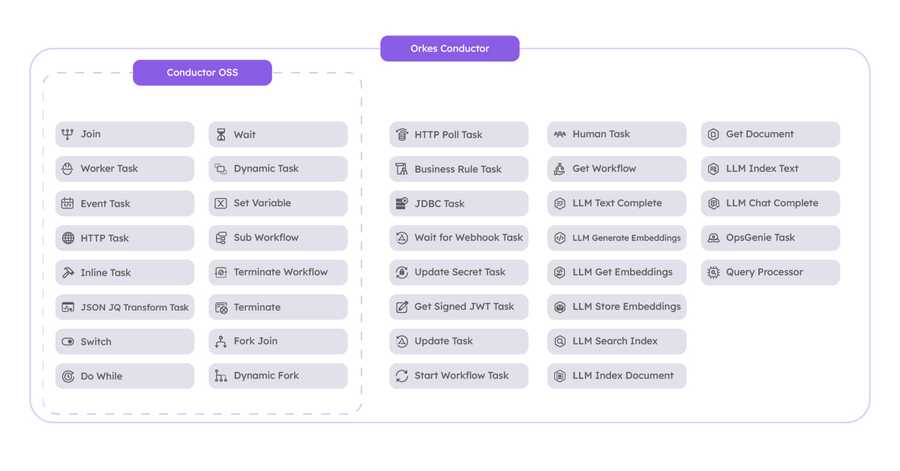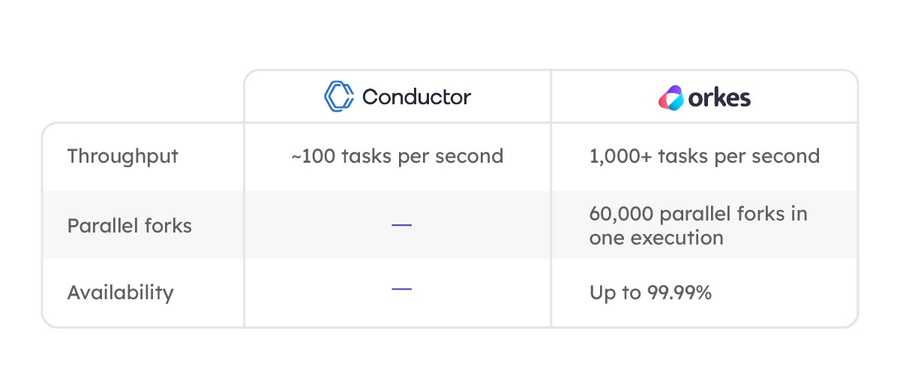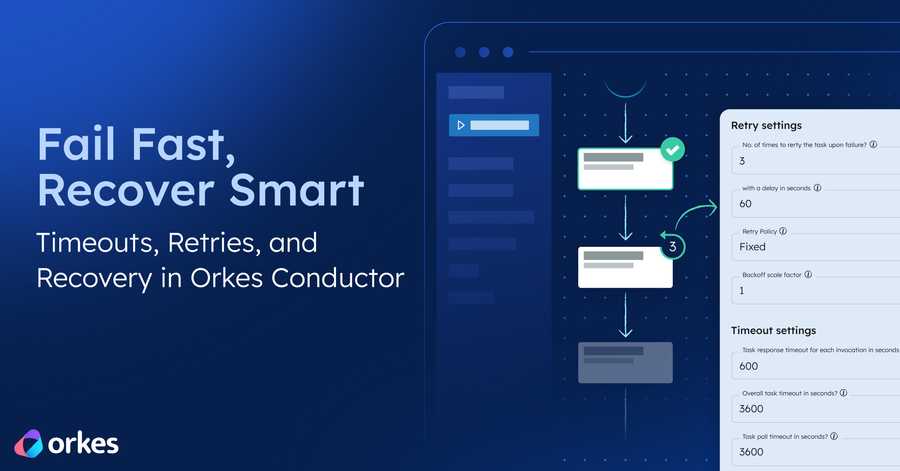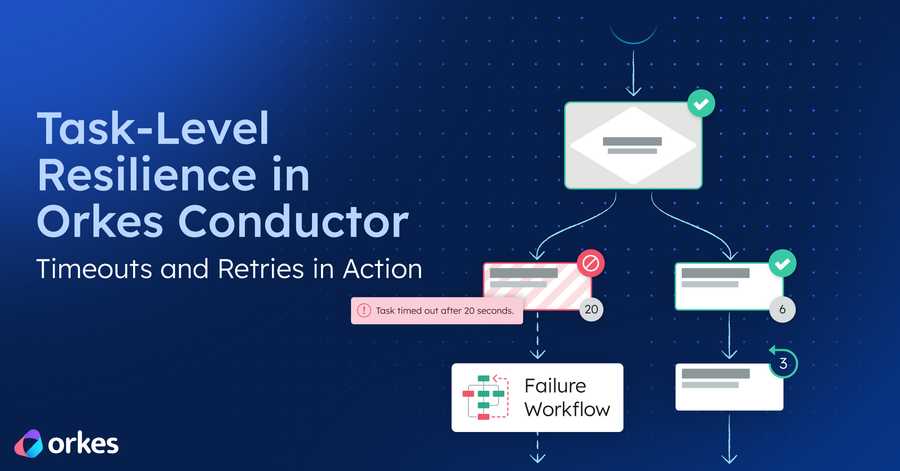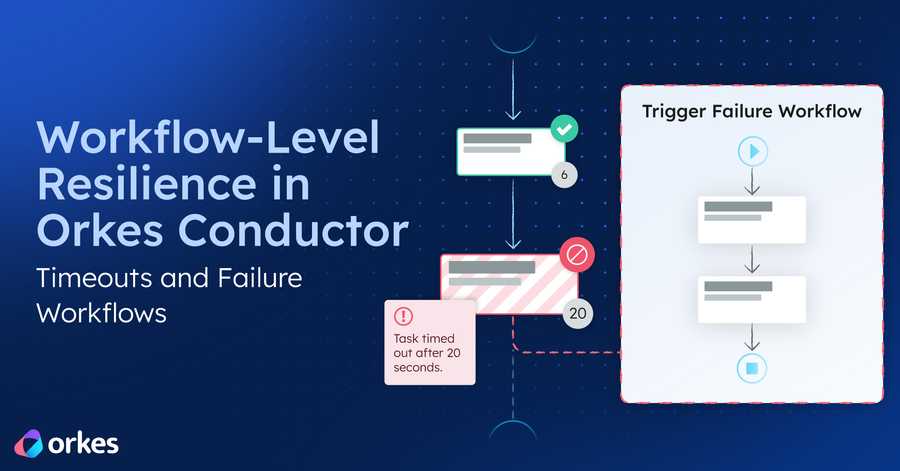6 Differences between Conductor OSS and Orkes Conductor

Conductor is a workflow orchestration engine for creating complex, durable, or long-running executions across distributed components. Originally built at Netflix by its platform team, Conductor powered its astronomical growth as the leading video-streaming service. In 2016, Conductor was made open-source and has seen massive adoption across sectors, with companies ranging from startups to Fortune 500s using it for their mission-critical workflows.
In 2021, Orkes was founded in order to deliver enterprise-grade Conductor service so that developer teams can focus on scaling with Conductor without worrying about managing its infrastructure. Orkes took over the project as the official maintainer of Conductor project in 2023, launching Conductor OSS as the new open-source repository on GitHub.
A common question arises: “What is the difference between Conductor OSS and Orkes Conductor?” In this article, we will explore the six key differences between the two Conductor versions and which solution is the most suitable option for you.
First, let’s take a look at Conductor’s core features in both open-source and enterprise versions.
Conductor’s core features
Conductor decouples workflow definitions from its execution policies and its runtime implementation, so that you can quickly build complex code-centric processes that are durable, dynamic, and traceable.
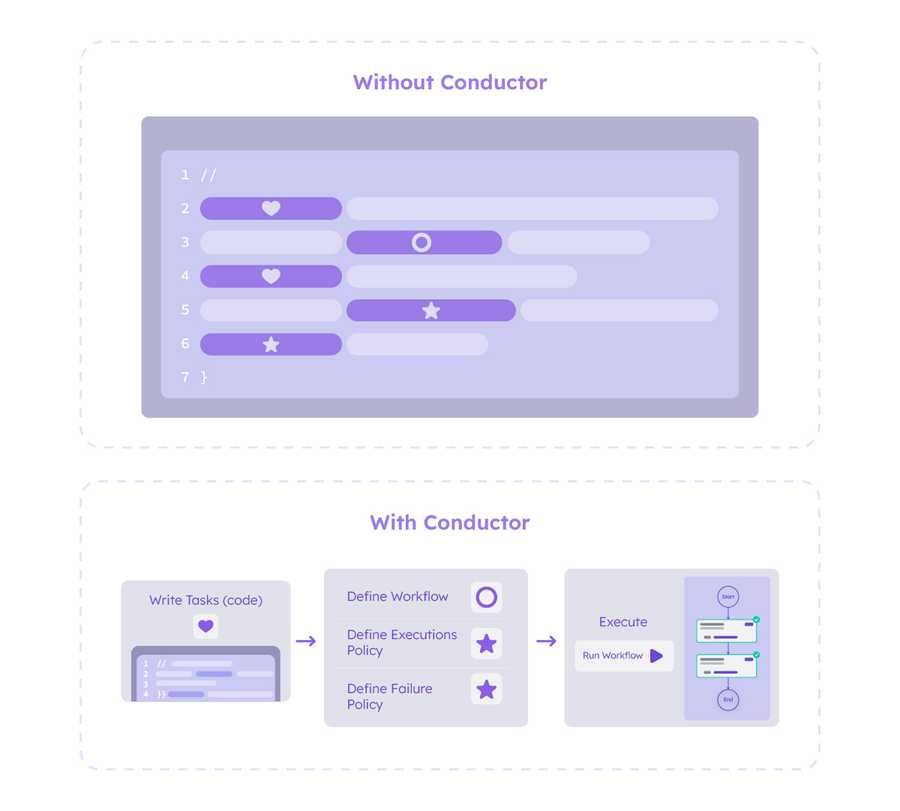
Developer-first experience
As a workflow orchestration engine, Conductor allows you to easily define your workflows and execution policies and then handles the tricky intricacies of its runtime behavior for you. This means that enterprises can focus on building out their core business value without spending hours creating resilient plumbing code to connect components, trying to avoid breaking things when changing their workflow logic, or tracing where and why the process failed or terminated.
Language agnostic
Conductor is language agnostic, so developers can code in Java, Python, CSharp, Golang, or any language that best suits the task at hand. Using Conductor means that you can wire up a Python worker function with an SQL expression or an HTTP call into the same workflow or process without the extra work of connecting all these different bits together.
Easily build anything and scale
These workflows can be easily built in two ways:
- In code, using Conductor’s SDK clients and APIs
- In the UI-based visual editor
With Conductor’s decoupled architecture, users can change up and deploy their workflows at any time without breaking existing runtime executions.
Conductor enables you to build workflows using a wide range of tasks, providing speed and scalability in any use case:
- Build microservice-based applications in multiple languages
- Set up long-running processes that persist across months or years, such as billing and subscription management, shipping and logistics, or infrastructure upgrades
- Orchestrate pipelines for intelligence and operation-heavy domains like DevOps, DataOps, MLOps, or SecOps
Observe, troubleshoot, and test
Conductor encodes durability for all its workflows while removing the complexities involved in maintaining a durable execution state. Using Conductor, all users not only get full visibility into the workflow progress and outcome but are also equipped to test and troubleshoot their code without wasting time.
Conductor OSS vs Orkes Conductor
At its core, both Conductor OSS and Orkes Conductor are powerful orchestration engines that can streamline and accelerate complex processes. However, both versions are equipped with varying features. Let’s explore the differences between Conductor OSS and Orkes Conductor.
1. Extensive tasks and integrations
Both versions offer a wide range of in-built tasks so that developers can build with ease. With these tasks, Conductor executes common application-building components such as HTTP calls and database operations, minimizing the need to write microservices.
Orkes Conductor offers an even wider range of tasks in its enterprise version compared to the open-source version. From webhooks and human task forms to AI agent tasks, Orkes Conductor provides much more flexibility in orchestrating diverse processes.
Compared to Conductor OSS, Orkes Conductor also provides dozens of integrations out of the box with large language models, vector databases, message queues, and more.
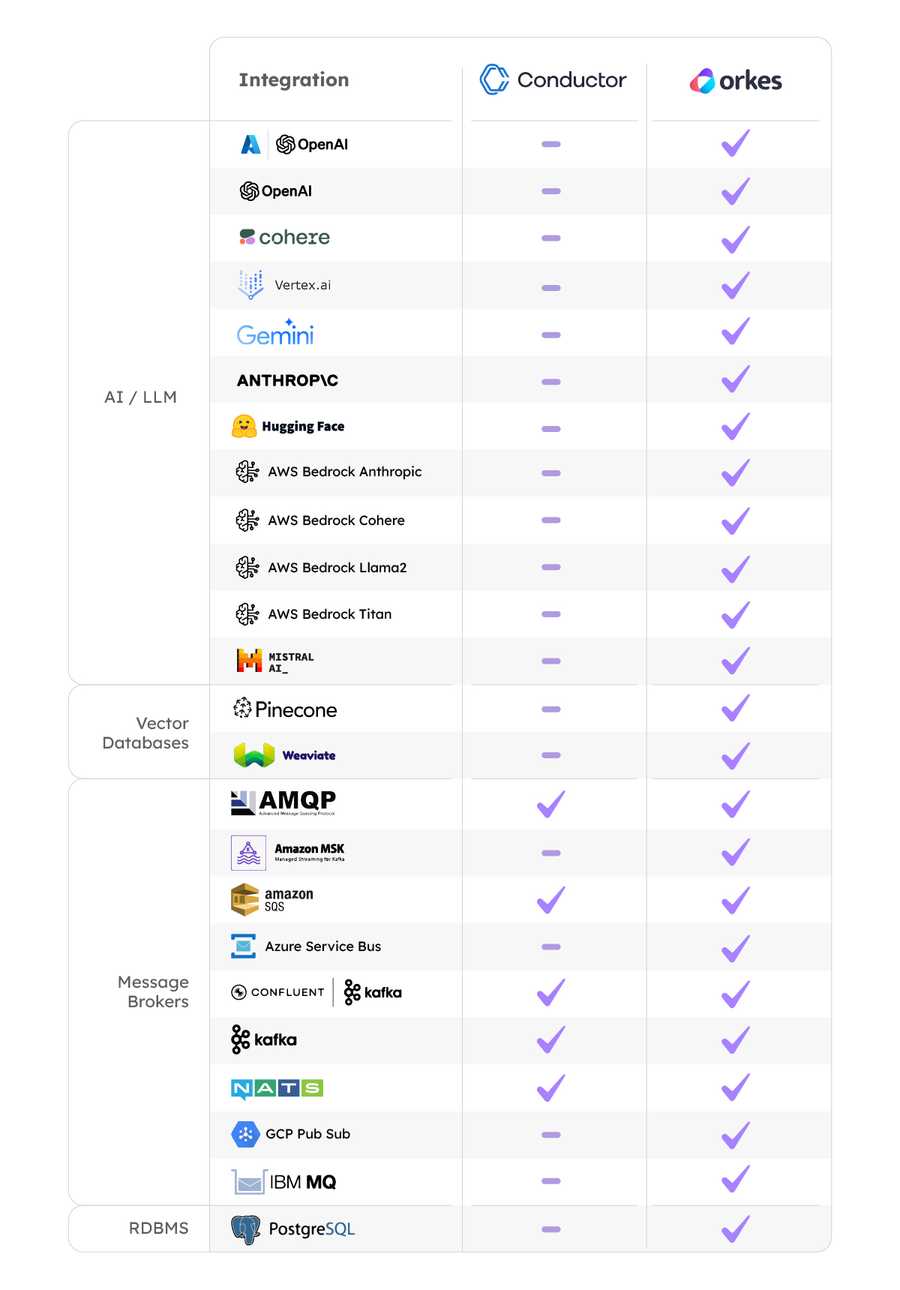
With Orkes, you can use Conductor to handle more complex workflows such as:
- Streamlining human-driven processes, such as onboarding, claims processing, or alert handling
- Building generative AI capabilities with AI agent tasks, prompt templates, and integrations
2. Visual workflow editor
In Conductor, users can view their workflows as flow diagrams for ease of visualization. Orkes Conductor takes that feature a step further, allowing users to build and edit workflows directly in a visual editor.
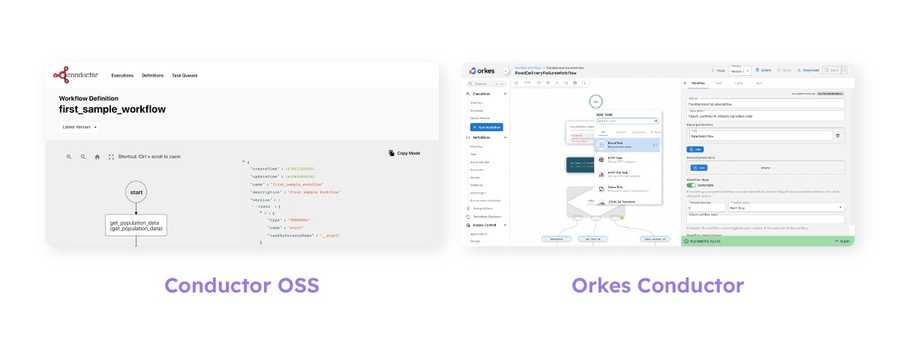
3. Robust by design
Conductor’s architecture, where tasks are indexed in persistent queues, means that it is capable of handling high workloads with no downtime. Conductor is also equipped to handle large volumes of parallel tasks, even dynamically at runtime. With Orkes, you can even execute up to 60,000 parallel forks in a single workflow execution.
Crucially, Orkes guarantees up to 99.99% availability for all its Conductor servers and provides auto-failover so that you can run mission-critical workflows with high availability needs.
4. Enterprise-grade security
Conductor OSS is a self-managed platform and has limited security features. On the other hand, Orkes runs Conductor on SOC 2 Type II certified infrastructure and has multi-layer threat mitigation policies, including code vulnerability scans, firewall, and DDoS protection.
Users can securely sign into Orkes Conductor using single sign-on (SSO) with any OAuth 2.0 provider and create workflows that securely pass sensitive data, like authentication tokens, using secret variables.
Furthermore, with its fully-featured role-based access controls (RBAC), Orkes Conductor provides granular control over authorized access to workflows, tasks, secrets, AI prompts, and more.
5. Heightened observability
By default, Conductor provides visibility into each workflow execution, including its input/output parameters, starting timestamp, number of retries, reason for failure, and so on. These parameters empower developers to quickly troubleshoot workflow executions and make the required adjustments.
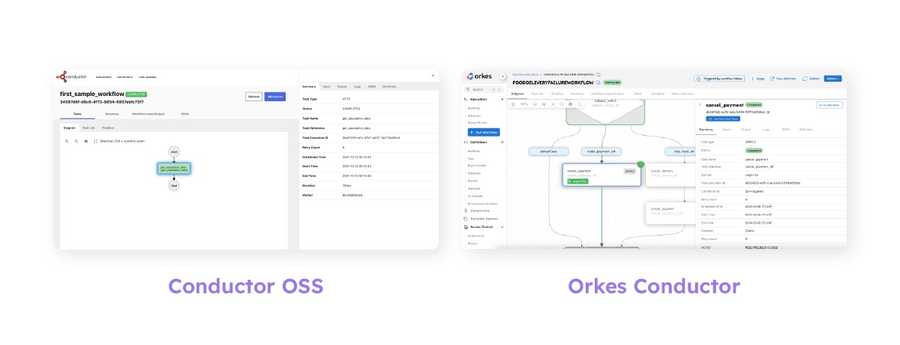
Using Orkes, developers can also leverage its metrics dashboard for aggregated analytics and alerts on all workflow executions. In other words, users get key insights into cluster usage, workflow performance, and more, enabling them to quickly identify patterns and resolve bottlenecks.
6. Managed infrastructure
To start using Conductor, users must run and deploy it with the appropriate infrastructure, like Redis for persistent queue storage and Elasticsearch for indexing. For the open-source version, this underlying infrastructure has to be self-managed.
On the other hand, Orkes provides managed infrastructure services, with the flexibility to deploy and host Conductor on your preferred cloud provider (AWS, Azure, or GCP). Orkes handles the infrastructure set-up, maintenance, and upgrades so that users can focus on leveraging Conductor without the burden of operational challenges.
While both versions are built for performance, Orkes Conductor is deployed on infrastructure specially engineered for low latency, extra persistence, and high availability.
Which solution is right for my business?
Conductor OSS is a great starting point for getting into workflow orchestration. Compared to Orkes Conductor, Conductor OSS is a self-managed solution, which allows room for configuring a custom set-up for your Conductor cluster. At the same time, these operational costs can add up when running workloads at scale, making it more expensive to maintain and manage enterprise-ready Conductor clusters on your own.
On the other hand, Orkes Conductor is perfect for any organization that wants to accelerate their orchestration journey without its operational load of building infrastructure. With more enterprise-grade features and a managed infrastructure, using Conductor via Orkes will help slash the total cost of ownership while providing amplified support for building powerful workflows.
How can I switch from Conductor OSS to Orkes?
Both Conductor OSS and Orkes Conductor run on the same architecture and core engine, so switching from the open-source version to enterprise or vice versa is simple.
All workflow definitions are stored as JSON, and Orkes will help you import them from your existing Conductor cluster into the new cluster.
Summary
As a workflow orchestration engine, Conductor is a powerful companion for all sorts of complex processes. Here are the key differences that give Orkes Conductor an edge over Conductor OSS:
- A wider range of in-built tasks and integrations
- Visual workflow editor for a more seamless experience
- Increased robustness for higher workloads and service availability
- Enterprise-grade security with SOC 2 Type II certification, secrets, SSO, and RBAC
- Heightened execution observability, with insights from the metrics dashboard
- Managed infrastructure with the cloud provider of your choice
Interested in trying Conductor? Conductor is an enterprise-grade orchestration platform for process automation, API and microservices orchestration, agentic workflows, and more. Try it yourself using our Developer Playground sandbox, or get a demo of Orkes Cloud, a fully managed and hosted Conductor service.
Full comparison
For more information, check out the full comparison between Conductor OSS and Orkes Conductor.



